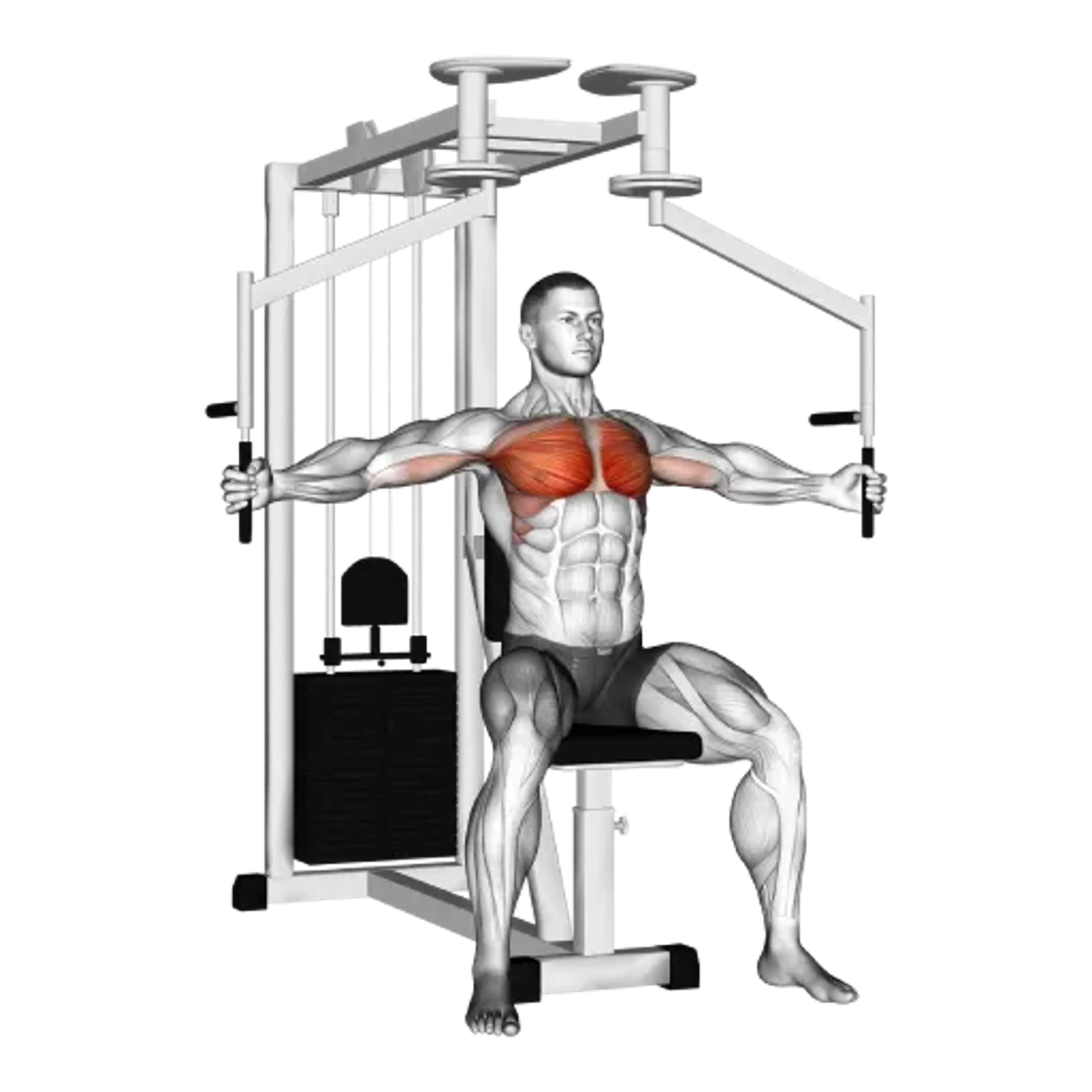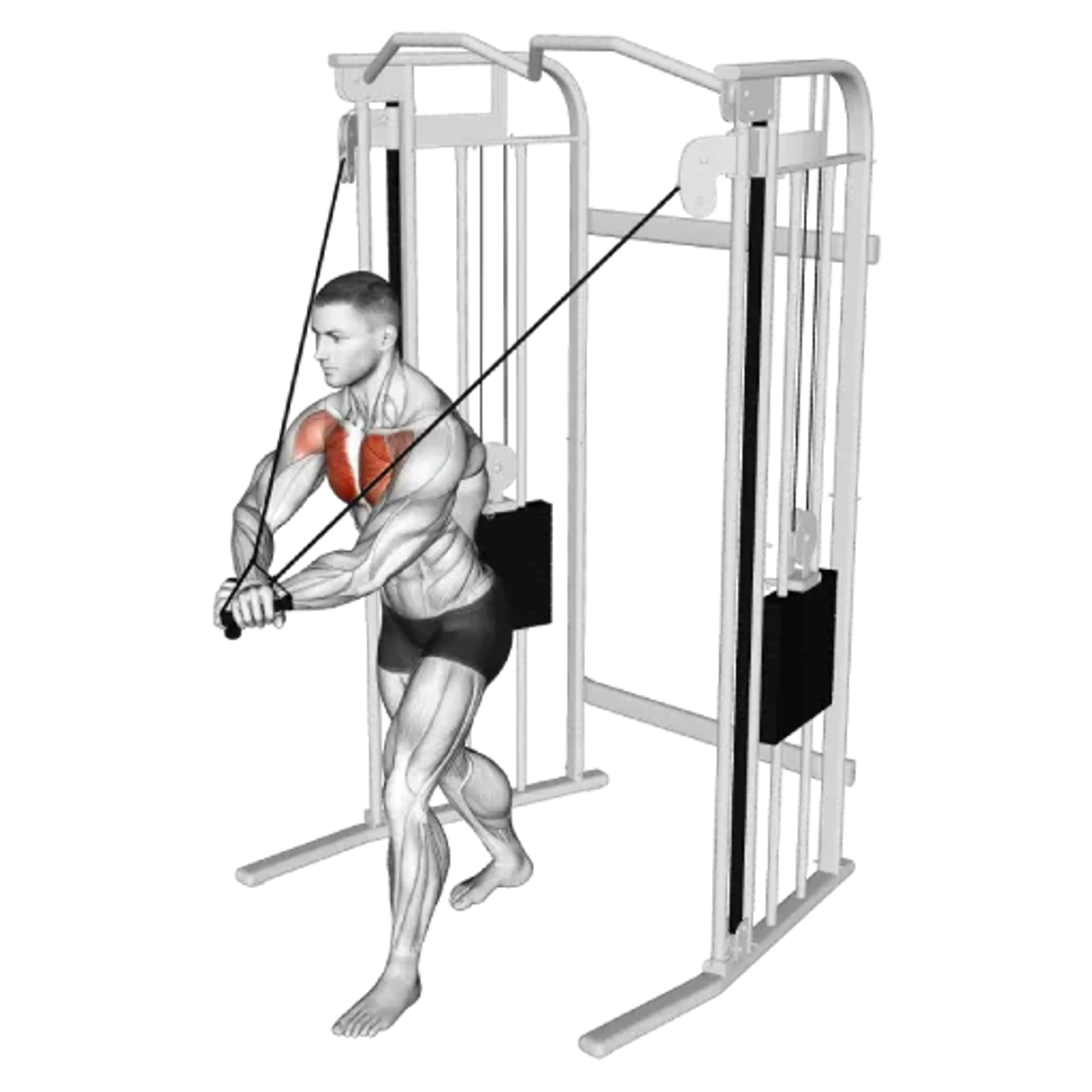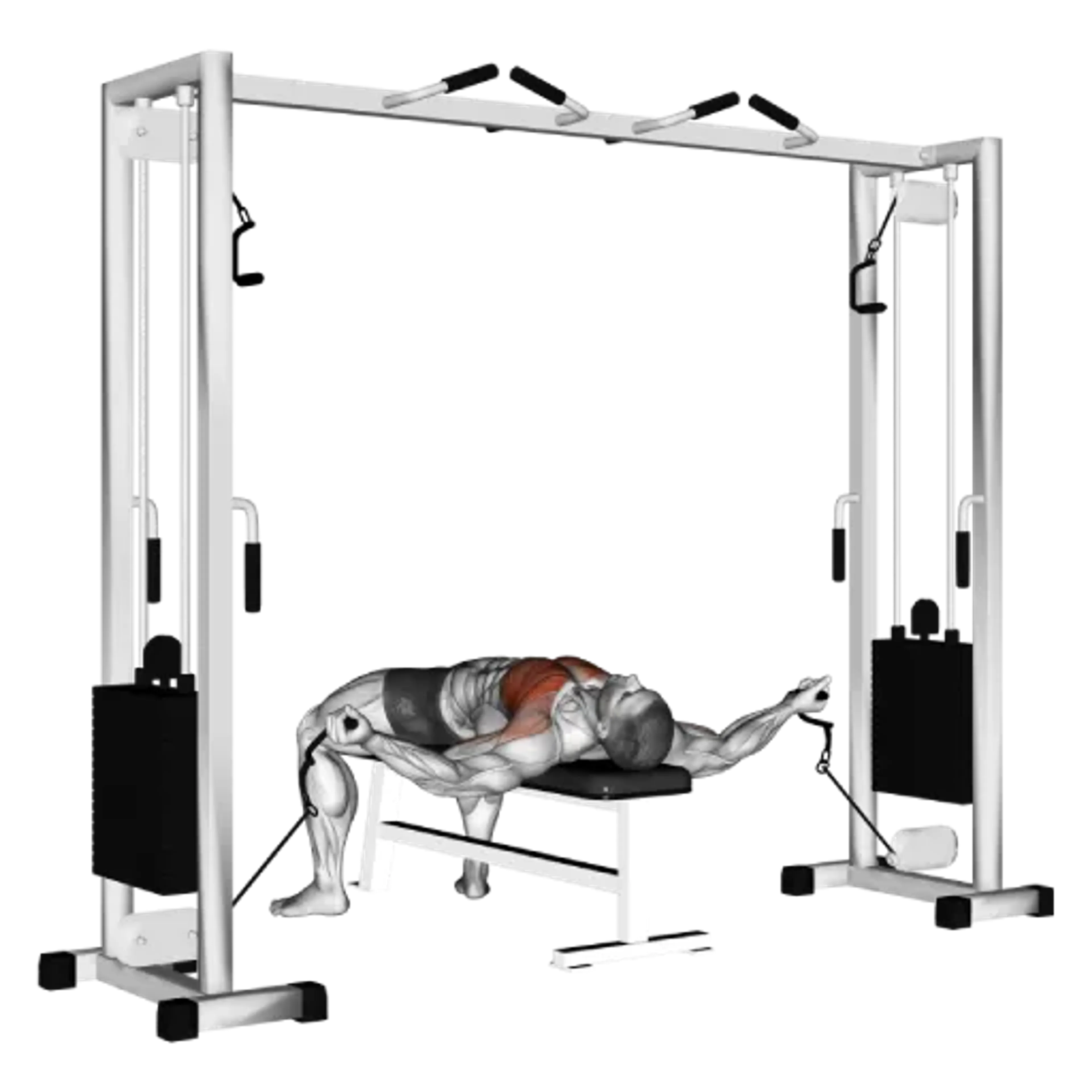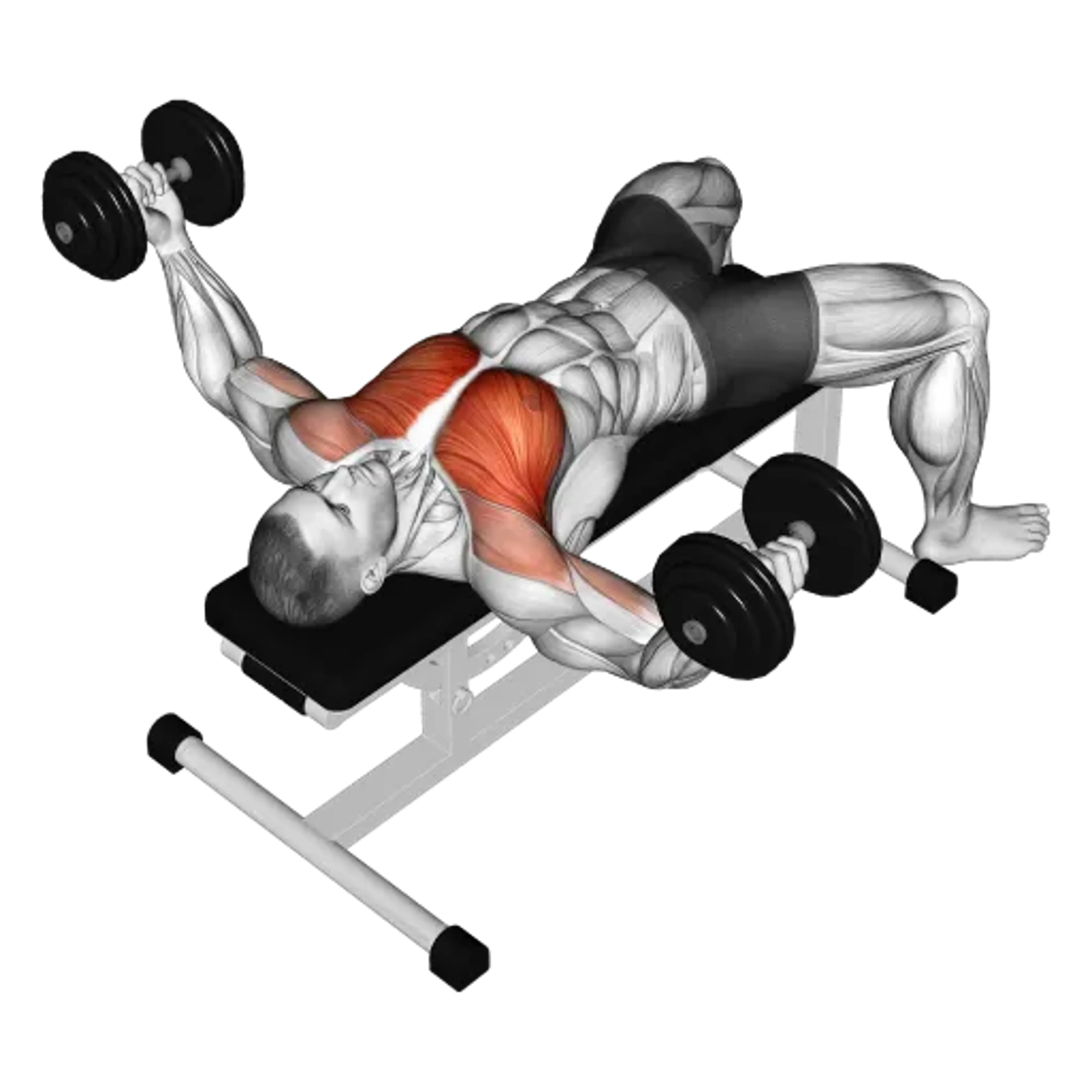High Cable Chest Fly

Overview
- Primary Focus:
- Chest.
- Equipment:
- Cable.
- Difficulty:
- Intermediate.
General Information
High Cable Chest Fly is an isolation exercise that primarily targets the chest and also engages the front shoulders and biceps to a lesser extent. It is an intermediate-level movement that uses high pulleys to drive a downward arcing path, emphasizing the lower chest while keeping continuous cable tension.
Use it when you want a lower-chest bias without heavy pressing or when equipment constraints make machine dips or decline pressing less practical. It delivers a strong contraction at the bottom position with manageable shoulder stress at moderate loads.
Because the line of pull heads downward and inward, you will feel more sternocostal fiber involvement. Choose this when alternating emphasis across training weeks with Middle Cable Chest Fly or Low Cable Chest Fly to cover the full chest region over time.
Expect the strongest squeeze when the hands meet near the low sternum or upper abdomen. Keep ribs down, avoid leaning back, and let the pecs guide the motion rather than the arms.
Muscles Worked
- Pectoralis Major
- Primary
- Deltoid
- High
- Serratus Anterior
- Medium
- Rectus Abdominis
- Low
Instructions
- Set both pulleys to a high position and attach single handles. Stand centered, stagger your stance, and take the handles with palms facing slightly down/in.
- Step forward to create tension, brace, and set shoulders down and back without hyperextending the low back.
- Start with arms slightly behind the torso, elbows softly bent and fixed (about 15–25°). Keep neck long and chest stacked over hips.
- Sweep the hands downward and inward to meet around low sternum or upper-ab level. Avoid letting the shoulders roll forward.
- Hold a brief squeeze at the bottom while keeping ribs down. Do not lean back to shorten the range artificially.
- Return along the same path under control until you feel a comfortable chest stretch without shoulder pinch.
- Repeat for the target reps while keeping motion smooth and tension on the pecs throughout.
Common Mistakes
Injuries
High Cable Chest Fly is a medium risk exercise when performed with proper technique.
Lower-chest emphasis can tempt excessive lean and shoulder protraction. Keep ribs down, do not lock the elbows, and avoid yanking the stacks to start the rep.
If you feel front-shoulder pinch, raise the handles a notch, reduce range slightly, or lighten the load. Progress with slow eccentrics, pauses, or modest weight increases while keeping form stable.
Alternative Exercises
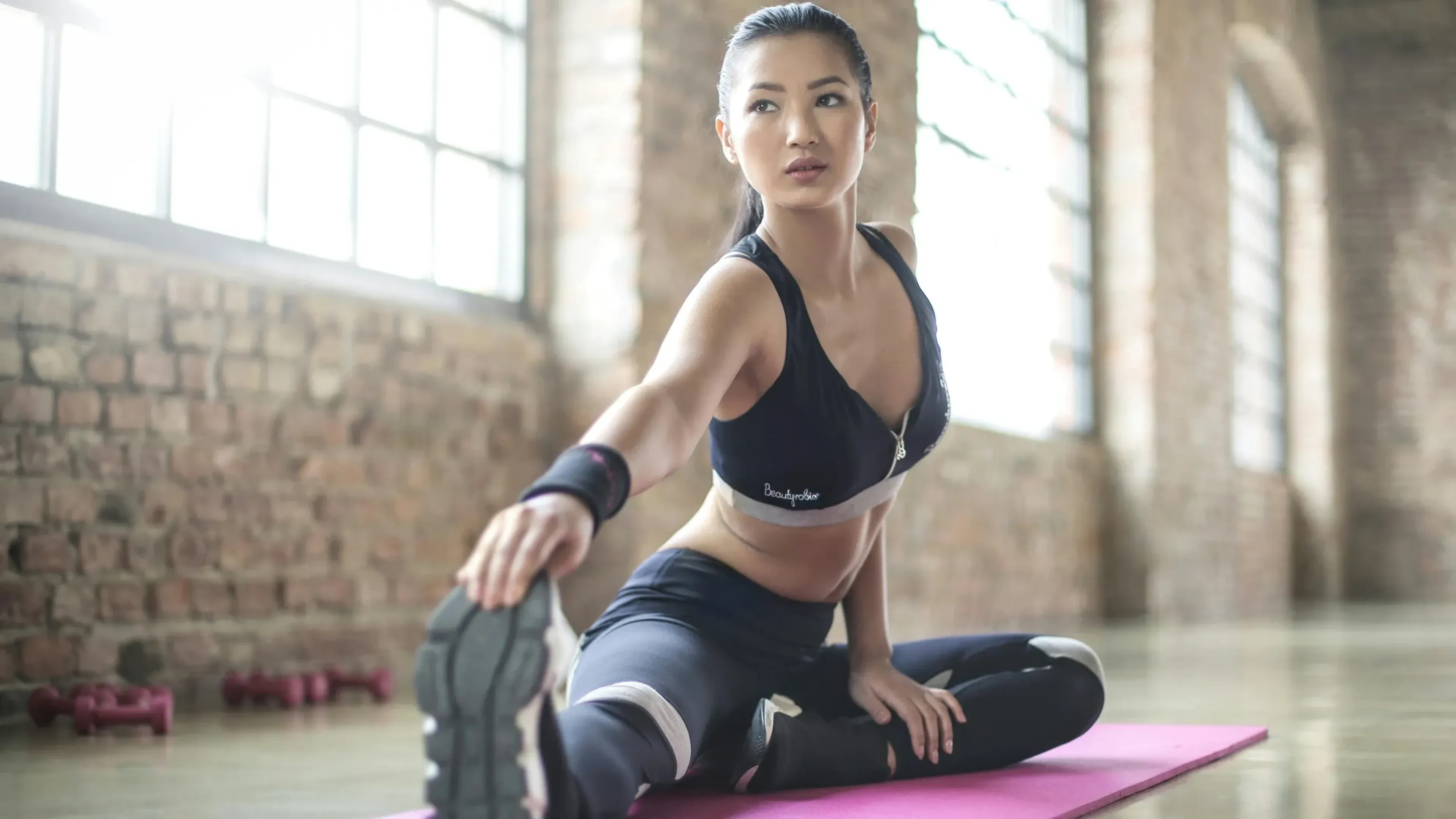
Frequently Asked Questions
- Q: What handle position should I finish at?
Finish with the hands meeting just below the sternum without leaning back. Think about bringing the upper arms across the body rather than dropping the hands too low.
- Q: How should I breathe during the set?
Exhale as the hands come together and inhale on the controlled return. Avoid holding your breath unless you need a brief brace on heavier sets.
- Q: Is a neutral or pronated grip better?
Both work. A slight pronation can feel more natural with the downward path, but choose the grip that lets you keep the elbows fixed and shoulders relaxed.
- Q: Can I do this seated or on a bench?
Standing is most common, but a slight incline bench can help stability if balance limits you. Keep the same downward and inward arc and avoid pressing the handles.
Overview
- Primary Focus:
- Chest.
- Equipment:
- Cable.
- Difficulty:
- Intermediate.

